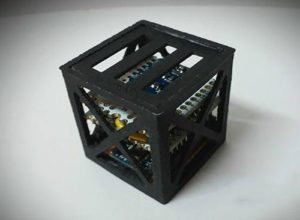Satellite and Radar design has a huge potential in this information era, where every technological giant is keenly involved in gaining more information through satellites. Giants such as Google, Facebook, and SpaceX need to expand their internet connection and hence are planning to launch many satellites. Google plans to invest around $1 billion in launching satellites. On the other hand, SpaceX aims at launching low-Earth orbit satellites.
The State of Satellite
Russia created history by launching the first satellite “Sputnik 1” in 1957. Today, more than 50 countries own their own satellites. There are a total of 1100 active and 2600 inactive satellites today. Among these 50% of them are in low-earth orbit (260 miles high), 20% are in medium orbit (13,000 miles high), and high orbit (22,236 miles), and 10% are in geosynchronous orbit (22,240 miles high). These satellites serve a lot of purposes including weather, navigation, and much more.
Weather Satellite: They send images of weather fronts and the changes that the environment faces.
Navigation Satellite: They calculate the location based time and signal distance using GPS and other navigation systems.
Communication Satellite: They connect remote areas and carry communication traffic.
Astronomical Satellite: They study about the universe.
Radar Satellites: The satellites are used for imaging the earth’s surface with the help of Synthetic Aperture Radar (SAR). The changes in the images of the same area are detected with the help of radar interferometry. The images of radar satellite can be extremely sharp.
The Future of Satellites
Pseudo- Satellites: High Altitude Aircraft with satellite abilities will be the future of satellites. The Zephyr, a pseudo-satellite flies at 70,000 feet during the day and 50,000 during the night. It runs with solar power and hovers over the same spot for an indefinite time.
Nanosats: Lightweight Satellites with small components similar to a smartphone will also rule the future. They have limited capability, but are cost-friendly.
Electrical Propulsion: They are used to keep the satellites in their orbit.
Electrical Engineer and Satellites
For a successful growth and innovation of satellites, an electrical engineer plays a very important role. A few firms are hiring 200-500 new employees and expanding their staff count. In the next 15 years, approximately 1,600 satellites are expected to get launched. These launches would give new opportunities to the engineers. Around 44,100 electrical engineering job openings are projected before 2022.


